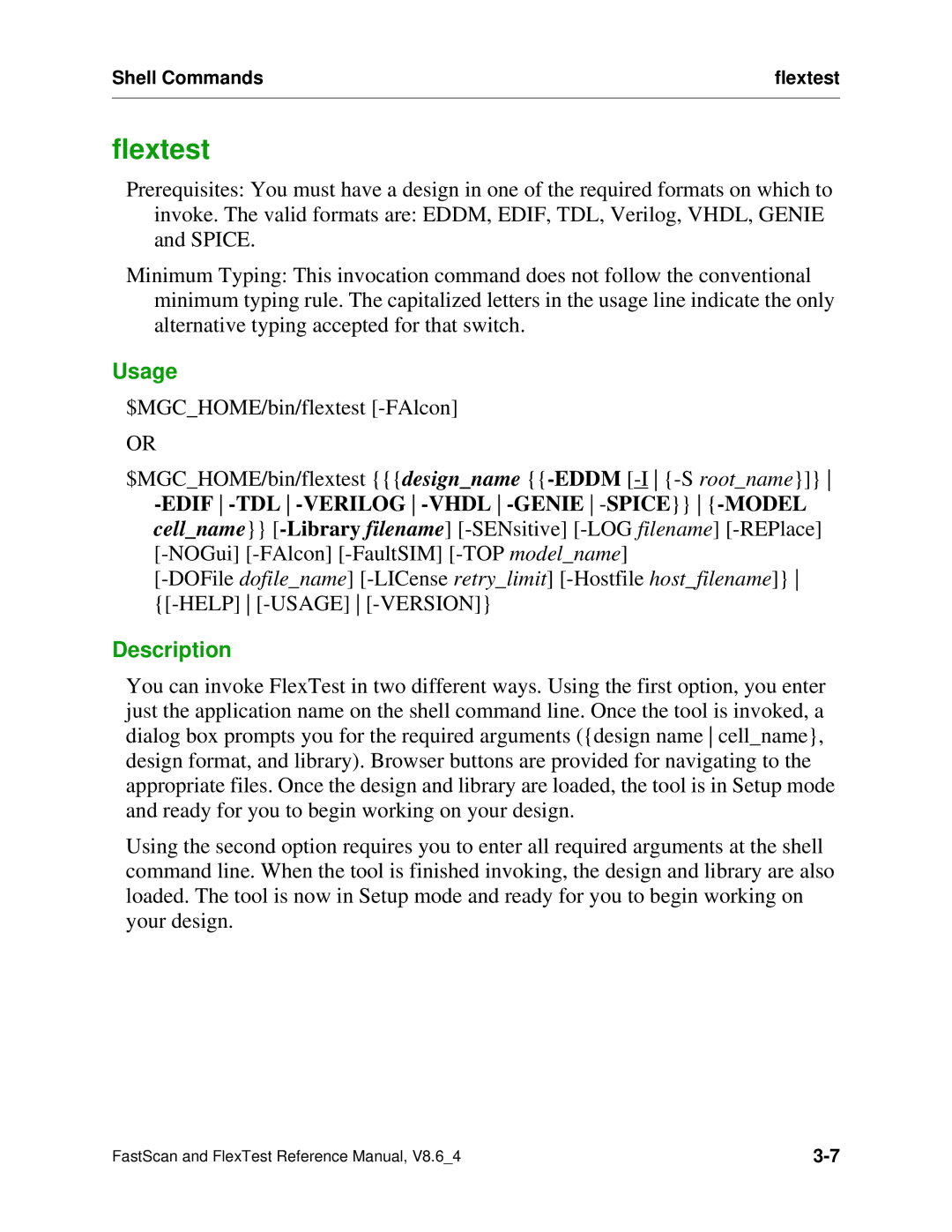Shell Commands | flextest |
|
|
flextest
Prerequisites: You must have a design in one of the required formats on which to invoke. The valid formats are: EDDM, EDIF, TDL, Verilog, VHDL, GENIE and SPICE.
Minimum Typing: This invocation command does not follow the conventional minimum typing rule. The capitalized letters in the usage line indicate the only alternative typing accepted for that switch.
Usage
$MGC_HOME/bin/flextest
OR
$MGC_HOME/bin/flextest {{{design_name
Description
You can invoke FlexTest in two different ways. Using the first option, you enter just the application name on the shell command line. Once the tool is invoked, a dialog box prompts you for the required arguments ({design name cell_name}, design format, and library). Browser buttons are provided for navigating to the appropriate files. Once the design and library are loaded, the tool is in Setup mode and ready for you to begin working on your design.
Using the second option requires you to enter all required arguments at the shell command line. When the tool is finished invoking, the design and library are also loaded. The tool is now in Setup mode and ready for you to begin working on your design.
FastScan and FlexTest Reference Manual, V8.6_4 |
